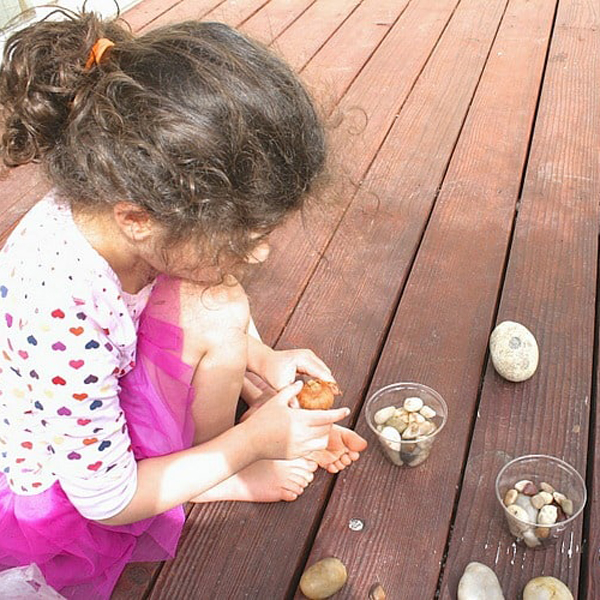
One of our favorite science activities for kids is observing plant growth. In this science experiment for kids, children will be forcing bulbs into bloom and observing the changes that take place over time. This science exploration allows students the opportunity to observe parts of the plant up close and monitor its growth on a free printable recording sheet.
Materials for Plant Growth Science Experiment
- Clear cup or container for planting
- Marbles, stones or pebbles
- Water
- Plant bulb
Click here for the PDF of the recording sheet!
Procedure for Observing Plant Growth with Bulbs
- Fill a clear container about 3/4 full with rocks, marbles, or pebbles.
- Place the bulb on top. (Be sure you put the bulb in the container root side down.)
- Fill the glass with water until it’s just barely covering the bottom of the bulb.
- Place the bulb in a sunny window.
- Continue observing the bulb each day and watch what happens. Be sure to add water to the container as the water level begins to go down.
- Record your observations each week on the free recording sheet.
What’s Going On?
By planting a bulb in a clear container with stones, you’ll be able to observe the roots growing, as well as observe the plant growing above the rocks.
Want to go even further?
- Even more activities to inspire creativity and critical thinking for various ages.
- Do this experiment with different kinds of bulbs.
- Compare your observations.
Have an adult help you cut the bulb in half vertically. What is inside? Cut another bulb in half horizontally. What do you see?
- Plant some bulbs outside around your house or in a pot.
- Create a graph and chart the growth of your bulb each day.
Plant many bulbs in a large container the same way we did above to create a flowering centerpiece. You could even decorate it!







